How Shaw Industries is driving positive change in their business and market that shows how companies can thrive during constant transformation and workable solutions taking place around healthy homes that align with wellness interests.
Susan Farris is VP of Sustainability & Corporate Communications at Shaw Industries, based in Dalton, Georgia. I caught up with Susan and asked her about the work she has been leading at Shaw since joining their sustainability and strategy team in 2018. Susan provided examples of workable solutions and how Shaw Industries is driving positive change in their business and market that shows how companies can thrive during constant transformation.
Shaw has a lot of great work taking place around acoustics and moisture that stand to impact not only product development but how we engage with our customers on these critical topics that align with wellness interests. Read more to learn how Shaw is innovating for positive change.
Questions:
How has the concept of sustainability changed over time at Shaw, what has driven this change, and how has the company adapted?
Shaw began as a carpet manufacturer in Northwest Georgia -- out of roots in the tufted bedspread industry, an industry started by the women of Northwest Georgia as a way to support their livelihood. We are now a global company that is not only the world's largest carpet manufacturer but also the largest engineered hardwood manufacturer in the US, one of the largest modular resilient manufacturers in the US. Shaw also provides tile, stone, laminate and synthetic turf to residential and commercial markets worldwide.
Our business today is unrecognizable from its beginnings more than 50 years ago. Not surprisingly, our focus on sustainability has evolved over the decades as well. We have made steady progress against goals focused on water, energy, carbon, waste and product sustainability. While all of those things are still critically important, in recent years we have seen a growing focus on the impact of products and operations on people.
We spend an astounding 90 percent of our time indoors. As we've become an indoor species, people are increasingly focused on the spaces and materials we surround ourselves with. Noise, daylight, and room temperature all impact how we feel and what our experience is in space; so do the ingredients that go into products that people buy, including flooring.
There is an increase in our customers’ and the end-users’ consciousness of wellness topics. What was once the territory of niche media has now become common coverage for more broad-based print media, TV news, and radio.
With greater access to information, consumers are increasingly curious about what ingredients are going into their homes, workplaces, and schools. It’s a journey we’ve been on for decades, but the market is ever-evolving; new information emerges daily, and technology frequently changes. It presents an opportunity to continually think about how we can best create a positive human experience with our actions.
At Shaw, we have been focused on material health in alignment with Cradle to Cradle principles for more than 20 years. What began with our commercial customers is now becoming important for key segments of our residential customers. The concept of a healthy home and related attributes such as moisture, sound, comfort, and cleanability resonates at a tangible, personal level in a way that planetary issues have not when it comes to flooring selection. We are focused on sustaining HUMAN ability — putting people at the heart of sustainability. As the market has shifted, we’re continuously evolving our products and working to find the best ways to convey our messages simply to an increasingly diverse audience.
How do you make sure that sustainability efforts are meeting both the company and the market’s needs?
Like most companies these days, we are in the midst of constant transformation. Our industry and the sustainability landscape have shifted more significantly than usual over the past three to five years. With an eye toward those external drivers, Shaw recently took even more concerted efforts to better understand and connect our sustainability priorities to those of our customers and other stakeholders.
Our first step was to survey key internal stakeholders — our associates — to determine their sustainability priorities and what support they most needed from the corporate sustainability team to be effective. That led us to a new articulation of why corporate sustainability exists at Shaw: to leverage market insights and technical expertise to inform, influence and support business decisions. By overtly communicating that to our internal partners and tying activities that may have once been seen as compliance efforts or technical expertise more closely to innovation and the competitive advantage shifted expectations of the department.
With that foundation, it was natural to then align our sustainability subject matter experts to the main areas of our business — commercial and residential. Those customers and influencers have very different needs; and by dedicating experts to understanding that landscape, we are better able to bring market insights and support business needs.
What role do third-party assessments and certifications play at Shaw?
Shaw values third-party verification and validation of our sustainability efforts both as a way to simply communicate a product’s sustainability attributes and to avoid the skepticism that can come with unvalidated, self-disclosed information. We believe that everyone should have access to sustainable products for their homes and workspaces. Seeking third-party certification for our products is a key component of that commitment.
For example, Cradle to Cradle certification—with its focus not only on safe ingredients but also the effective use of raw materials and energy and water resources, and labor and community practices in the supply chain—is critical in our effort to create sustainable products.
We also ensure our products meet indoor air quality performance for VOC (volatile organic compounds) emissions using Green Label Plus, FloorScore, and GREENGUARD certification programs. In addition to these third-party certifications, we also provide product ingredient and disclosure information via Health Product Declarations (HPDs) and Declare labels, to be responsive to marketplace expectations for manufacturers to be more transparent about the footprint of their manufacturing processes and the materials used.
In 2018, Shaw announced a new sustainable sourcing policy. Can you tell us more about that effort?
We strive to ensure that the products and ingredients that we source from others are held to the same high standards we set for our own operations, and our global sourcing group is an active participant in this effort. Our sustainable sourcing work stands to not only benefit Shaw and its customers, but the industry more broadly as new chemistry options become available.
Each purchase we make sends a signal to the market regarding what we value. In 2018, our sustainable sourcing policy incorporated the Ten Principles of the UN Global Compact as well as bringing even greater transparency into our supply chain by requiring disclosures about the ingredients that go into the products we make and sell in alignment with our commitment to Cradle to Cradle principles. This extends the positive impact Shaw is making beyond our own operations to a vast array of suppliers providing goods and services to Shaw.
Through close collaboration among our sourcing, product development and management, sustainability, legal teams, and others, we remain focused on refining and improving those processes as part of our commitment to continual improvement. We also bring our focus on diversity and inclusion in the way we manage our supply chain. We can have a significant impact on the businesses in our community by providing equal access to Shaw’s purchasing opportunities to all qualified suppliers.
Can you tell us about some of the new sustainable products coming to the market in 2020?
We have a lot of great work taking place around acoustics and moisture that stand to impact not only product development but how we engage with our customers on these critical topics that align with wellness interests. While those are efforts are broader than any one product, I’d highlight two innovative flooring products that we’re bringing to market in 2020.
● COMFOR3T, a new soft floor covering that is poised to revolutionize the U.S. trade show flooring market
● PET Resilient, a hard surface flooring for commercial buildings that are made from recycled plastic bottles and that can be recycled when it’s time to be replaced.
COMFOR3T is manufactured with 60-80 percent recycled content (depending on the color), which reduces the use of virgin materials by possessing the ability to incorporate both post-consumer and post-industrial recycled content. It can be reused multiple times and once it’s ready for replacement, it is 100% recyclable. Once returned to Shaw we can recycle it back into new COMFOR3T products or other products that could benefit from this waste stream. COMFOR3T is Cradle to Cradle CertifiedTM Bronze having been assessed for material health, material reuse, renewable energy/carbon management, water stewardship, and social fairness.
Shaw’s PET Resilient product, which will be available to commercial markets this year through our Shaw Contract and Patcraft brands is made from 97 percent PET (40% post-consumer recycled content) with no plasticizers added. The product is able to use so much recycled content because the fibers are hidden in the core of the flooring. Typically when manufacturers want to use post-consumer recycled PET for aesthetic purposes, such as a carpet fiber, they have to use clear bottles that are then solution-dyed to create the desired color. Using mixed-color bottles for these applications usually creates a gray end-product that significantly limits finish color options and make further recycling difficult. But by using recycled PET under the printed image layer of hard surface flooring, we can use mixed-color bottles and then fully recycle the flooring at the end of its use.
Each square foot of this Cradle to Cradle CertifiedTM Bronze product contains 17 plastic bottles and when it is time to replace the flooring, Shaw will reclaim this resilient flooring and remake it into future generations of the product. Using waste as a feedstock and designed for circularity, this resilient innovation brings Cradle to Cradle® design to life.
Thanks to Susan for sharing her leadership initiatives and goals at Shaw and workable solutions being created for customers.
Send inquiries about Round Rock Advisory to

